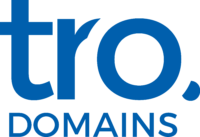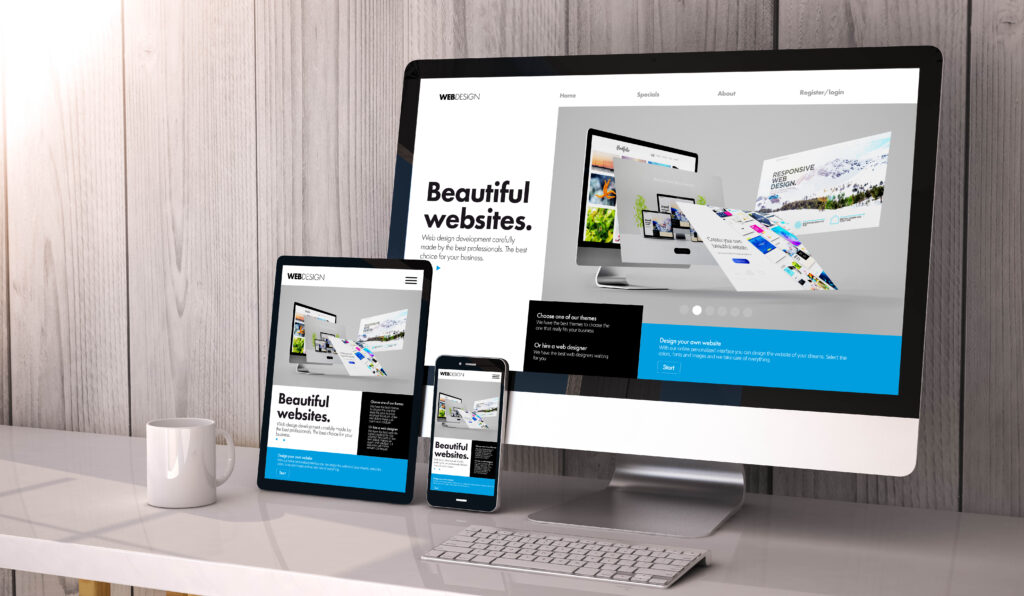Introduction
In today’s digital age, having a website is essential for any business looking to establish an online presence. Despite this, 28% of small businesses don’t yet have a website, while 71% have embraced this crucial tool. As businesses increasingly move online, the need for a strong and effective website has become more important than ever for business growth and expansion.
A website serves as the digital face of your business. It’s where potential customers first interact with your brand and learn about your offerings. Whether you are a start-up or an established business, your website provides an essential platform to communicate your value proposition and attract new customers.
Furthermore, a website can help you stay competitive in an increasingly crowded marketplace. Without a website, you are essentially invisible to a significant portion of your potential audience. In contrast, businesses with a website can easily showcase their products, services, and customer testimonials, which can significantly influence purchasing decisions.
In addition to establishing an online presence, a website is also a powerful tool for data collection and analysis. You can track visitor behaviour, understand what pages are most popular, and identify which products or services are generating the most interest. This data is invaluable for refining your business strategies and improving customer satisfaction.
Having a website also allows for more efficient communication with your customers. Features like contact forms, chatbots, and FAQs can provide immediate answers to customer queries, enhancing their overall experience with your brand. This not only helps in building trust but also encourages repeat business.
Many small businesses are deterred by the perceived complexity and cost of developing a website. However, with the advent of user-friendly website builders and affordable hosting services, creating a professional website is more accessible than ever. Even businesses with limited technical expertise can now build and maintain a robust online presence without breaking the bank.
It’s also worth noting that mobile optimisation is crucial in today’s environment. With a growing number of consumers accessing the internet via smartphones, having a mobile-friendly website is no longer optional. A well-optimised website ensures that you can reach customers on any device, providing a seamless and satisfying user experience.
In summary, the benefits of having a website extend far beyond mere visibility. A well-designed and maintained website can drive business growth, improve customer engagement, and provide valuable insights into consumer behaviour. For businesses that have yet to take the plunge, the time to develop an online presence is now.
Boosting Credibility
A professional website is a powerful tool for boosting your business’s credibility. In fact, 17% of small businesses build a website specifically to establish their credibility and authority. Moreover, half of all consumers base their impression of a business on its website design. A well-designed website allows you to present a professional image, showcase customer testimonials, and highlight positive reviews, all of which help to build trust with potential clients.
Investing in high-quality website design can significantly impact how your business is perceived. First impressions matter, and a visually appealing, easy-to-navigate website signals to visitors that your business is trustworthy and professional. The design should reflect your brand identity, using consistent colours, fonts, and imagery to create a cohesive look.
Functionality is just as important as aesthetics. A website that is easy to use and quick to load will keep visitors engaged and reduce bounce rates. Ensure that your site is user-friendly, with clear menus, intuitive navigation, and a responsive design that works seamlessly on mobile devices. This level of professionalism not only enhances the user experience but also reinforces your business’s credibility.
Your website is also a platform to share your expertise and establish your authority in your industry. By including a blog or news section, you can regularly post updates, insights, and articles relevant to your field. This content not only demonstrates your knowledge but also provides value to your audience, encouraging them to return to your site for more information.
Incorporating customer testimonials and reviews is another effective way to boost credibility. Positive feedback from satisfied clients acts as social proof, reassuring potential customers that your business delivers on its promises. Feature these testimonials prominently on your homepage or create a dedicated reviews page to showcase the positive experiences of your clients.
Transparency is crucial in building trust. Ensure that your website includes detailed information about your products or services, along with clear contact details. An ‘About Us’ page that outlines your company’s history, mission, and team members can also help humanise your brand and make it more relatable.
Security is another critical aspect of credibility. Make sure your website uses HTTPS encryption to protect visitors’ data. Display trust badges and certifications if applicable, and provide a clear privacy policy explaining how you handle customer information. These measures reassure visitors that their data is safe with you.
Finally, keep your website updated. Regularly refresh content, update images, and ensure that all information is current. An outdated website can give the impression that your business is inactive or lacks attention to detail. By maintaining your site, you show that your business is dynamic and committed to providing the best possible experience for your customers.
Broadening Reach
One of the significant benefits of having a website is the ability to broaden your reach. With a website, your business is accessible to a global audience, allowing you to serve clients beyond geographical limits, 24/7. However, many small businesses face the challenge of low website traffic, with 21% identifying it as their biggest issue.
To effectively broaden your reach, it is essential to optimise your website for search engines (SEO). SEO strategies help your website rank higher on search engine results pages, making it easier for potential customers to find you. This includes using relevant keywords, creating high-quality content, and ensuring that your website is mobile-friendly and fast-loading. Investing time and resources into SEO can significantly increase your website’s visibility and attract more organic traffic.
Social media integration is another powerful way to expand your reach. By linking your website to your social media profiles, you can drive traffic between the platforms and increase engagement. Sharing blog posts, updates, and promotions on social media can direct users to your website, boosting your online presence. Additionally, social media advertising allows you to target specific demographics and reach a wider audience.
Content marketing is a valuable strategy for attracting and retaining visitors. Regularly updating your website with fresh, relevant content such as blog posts, articles, and videos can keep your audience engaged and encourage repeat visits. High-quality content not only improves your SEO but also positions your business as a knowledgeable and reliable source in your industry.
Email marketing can also help broaden your reach by directing subscribers to your website. Collecting email addresses through sign-up forms on your site allows you to send newsletters, promotions, and updates directly to your audience. This keeps your business at the forefront of their minds and encourages them to visit your website regularly.
Online directories and review platforms are additional channels through which you can extend your reach. Listing your business on platforms like Google My Business, Yelp, and TripAdvisor can enhance your visibility and attract new customers. Positive reviews and high ratings on these platforms can drive more traffic to your website and improve your reputation.
Collaborating with influencers and other businesses can also broaden your reach. Partnering with influencers in your industry can introduce your business to their followers, driving traffic to your website. Similarly, cross-promotions with other businesses can expand your audience and generate mutual benefits.
Paid advertising, such as Google Ads and social media ads, is another effective way to increase traffic to your website. Targeted ads can reach potential customers based on their interests, location, and online behaviour, driving more relevant traffic to your site.
Lastly, participating in online communities and forums related to your industry can help you reach a broader audience. Sharing your expertise and providing valuable insights can direct users to your website and establish your business as a trusted authority. Engaging with these communities not only broadens your reach but also fosters relationships with potential customers.
Economical Marketing
A website provides a cost-effective platform for marketing your business. By leveraging online advertising strategies, you can reach a wide audience without the hefty costs associated with traditional marketing methods. Interestingly, 32% of small businesses use DIY website builders to create a basic website, showcasing the affordability and accessibility of this approach. With a website, you can effectively showcase your products and services, providing potential customers with detailed information and attractive visuals to encourage engagement.
Online marketing allows businesses to target specific demographics, ensuring that marketing efforts are directed at the most relevant audience. Tools like Google Ads and social media advertising enable precise targeting based on user behaviour, interests, and geographical location. This ensures that every pound spent on advertising delivers maximum return on investment.
Content marketing is another economical strategy that can be effectively executed through a website. By creating valuable and informative content, businesses can attract and retain a clearly defined audience. Blog posts, articles, and videos not only improve SEO but also provide potential customers with useful information, encouraging them to engage with your business. High-quality content positions your brand as an authority in your industry, which can lead to increased trust and loyalty.
Email marketing is a cost-effective way to keep in touch with your customers and promote your business. By collecting email addresses through sign-up forms on your website, you can send newsletters, special offers, and updates directly to your audience. This direct line of communication helps to maintain customer interest and drives repeat visits to your site, thereby increasing the likelihood of conversions.
Social media integration with your website further enhances your marketing efforts. By linking your social media profiles to your website, you can drive traffic between the platforms and increase engagement. Sharing updates, promotions, and content on social media can direct users to your website, providing them with more comprehensive information about your offerings. Social media platforms also offer cost-effective advertising options that can be used to reach a larger audience.
Using analytics tools available through your website, you can monitor the effectiveness of your marketing campaigns in real-time. This data-driven approach allows you to measure key performance indicators such as traffic, engagement, and conversion rates. By analysing this data, you can refine your strategies, ensuring that your marketing efforts are both efficient and effective.
Lastly, online directories and review platforms can be valuable for increasing your online visibility. Listing your business on platforms like Google My Business, Yelp, and Trustpilot can enhance your reputation and attract new customers. Positive reviews and high ratings on these platforms can drive more traffic to your website and improve your credibility. By taking advantage of these free or low-cost resources, you can extend your reach and bolster your marketing efforts without significant financial investment.
Engaging with Customers
Engagement with customers is a vital part of any successful business strategy. Your website serves as a direct line of communication through features like contact forms, enabling customers to reach out easily. Additionally, integrating social media platforms allows for increased interaction and engagement, fostering a stronger relationship with your audience. 24% of small businesses use their website to prominently showcase products and services, enhancing customer engagement.
Interactive elements such as live chat, forums, and comment sections can further enrich the user experience by providing immediate support and fostering a sense of community. A live chat feature, for instance, can address customer queries in real time, thereby improving satisfaction and encouraging a faster decision-making process. Forums and comment sections offer a platform for users to share their experiences, ask questions, and even assist each other, creating a community around your brand.
Email newsletters are another effective way to engage with your audience. By collecting email addresses through your website, you can send tailored content, updates, and exclusive offers directly to your subscribers. Personalised emails based on user behaviour and preferences can make your audience feel valued and understood, increasing their loyalty to your brand.
User-generated content (UGC) is another powerful tool for customer engagement. Encouraging customers to share their experiences and content related to your products or services can create a sense of community and authenticity. Featuring UGC on your website or social media channels not only provides social proof but also makes your customers feel like an integral part of your brand.
Creating a blog or a news section on your website can also drive engagement by offering valuable and relevant content. Regularly posting articles, updates, and insights related to your industry not only positions your business as an expert but also provides continuous value to your audience. Engaging content keeps visitors coming back and encourages them to share your articles, thus extending your reach.
Incorporating feedback mechanisms such as surveys and polls can help you understand your customers’ needs and preferences better. These tools allow your audience to voice their opinions, making them feel heard and valued. Analysing the feedback can provide insights into areas for improvement and help tailor your offerings to meet customer expectations better.
Customer testimonials and reviews play a crucial role in building trust and encouraging engagement. Featuring these prominently on your website reassures potential customers about the quality and reliability of your offerings. Positive reviews and testimonials act as endorsements, boosting credibility and prompting new customers to interact with your business.
Finally, ensuring that your website is mobile-friendly is essential for effective customer engagement. With a growing number of users accessing websites via mobile devices, a responsive design ensures a seamless experience across all devices. This accessibility makes it easier for customers to interact with your business, regardless of how they choose to access your site.
Understanding Customer Behaviour
A comprehensive understanding of customer behaviour is pivotal for refining your business strategies. A website offers a wealth of data that can provide deep insights into how visitors interact with your site. By examining metrics such as page views, bounce rates, and average session duration, you can gain a clearer picture of what captures your audience’s attention and what areas may need improvement.
Analytics tools like Google Analytics can track various aspects of visitor behaviour, including the most frequently visited pages, the path users take through your site, and the points at which they exit. This information is invaluable for identifying strengths and weaknesses in your website’s design and content. For instance, if a particular page has a high bounce rate, it may indicate that the content isn’t resonating with visitors or that the page is difficult to navigate.
Understanding which products or services attract the most interest can also guide your business decisions. By monitoring which items are frequently viewed or added to carts, you can tailor your inventory and marketing strategies to meet customer demand more effectively. Additionally, analysing search queries on your site can reveal what your customers are looking for, allowing you to optimise your offerings accordingly.
Heatmaps are another useful tool for visualising customer interaction. These graphical representations show where users click, scroll, and spend the most time on a page. By understanding these patterns, you can make more informed decisions about the placement of key elements like call-to-action buttons, images, and links. This can lead to a more intuitive and user-friendly experience, ultimately driving higher engagement and conversions.
User feedback mechanisms, such as surveys and polls, can complement quantitative data by providing qualitative insights into customer preferences and pain points. This direct feedback can help you understand why users behave in certain ways and what they expect from your business. Addressing these insights can lead to more satisfied customers and improved loyalty.
The data gathered from your website can also inform your marketing efforts. By understanding the demographics, interests, and behaviours of your visitors, you can create more targeted and effective campaigns. Personalised marketing messages based on user behaviour can increase the relevance and impact of your communications, leading to higher engagement and conversion rates.
Tracking customer behaviour over time can also reveal trends and seasonal patterns. This information can help you anticipate changes in demand and adjust your strategies accordingly. For instance, if you notice a spike in traffic during certain times of the year, you can prepare by increasing inventory or launching targeted promotions.
Conclusion
Establishing a website is indispensable for any business aiming to thrive in the digital landscape. With the multitude of benefits a website offers, it serves as a cornerstone of your online strategy. A well-crafted website not only helps in showcasing your products and services but also in building trust and credibility among potential customers.
In the modern business environment, where competition is fierce, a website acts as a crucial differentiator. It allows you to present your unique value proposition and stand out in a crowded marketplace. The ability to reach a global audience, operate round the clock, and engage with customers from various demographics underscores the importance of having a digital presence.
A website also provides a centralised platform for all your marketing efforts. From content marketing and SEO to social media integration and email campaigns, it ties together various strategies, offering a unified approach to customer outreach. This not only enhances the efficiency of your marketing activities but also maximises return on investment.
The data insights derived from your website are invaluable for understanding customer behaviour. These insights help in tailoring your offerings and improving customer satisfaction, which in turn drives business growth. By leveraging analytics, businesses can make informed decisions and refine their strategies to better meet customer needs.
Moreover, advancements in technology have made website development more accessible and affordable. With user-friendly website builders and cost-effective hosting solutions, even businesses with limited resources can create a professional and functional website. This democratisation of web development has levelled the playing field, allowing small businesses to compete with larger enterprises.
In addition, the shift towards mobile internet usage necessitates having a mobile-optimised website. Ensuring your site is responsive and accessible on various devices can significantly improve user experience and increase engagement. In today’s fast-paced world, providing a seamless online experience can be the difference between gaining and losing a customer.
In essence, the multifaceted advantages of having a website make it a vital asset for any business. Whether you aim to boost credibility, broaden your reach, or engage more effectively with customers, a well-designed website can help achieve these goals. For businesses yet to establish their digital presence, the evidence is clear: the benefits far outweigh the costs.



